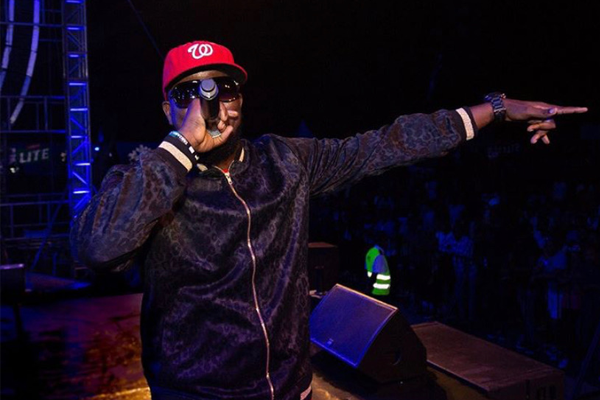The Soundscapes of Dar es Salaam

By PhD Candidate Hannah Vidmar, Department of African and African American Studies

It was nearing 7:30 p.m. on a Saturday night in July when I found myself in a bajaj, driving through the neighborhood of Msasani on my way to a performance. The sun had set, and the food stalls that lined Kimweri Avenue and the surrounding streets had come alive with the sounds of conversations and the smells of chips, chapati and grilled chicken. Tonight’s performance was set to take place at Makuti, a bar and restaurant located in Oyster Bay — a neighborhood that almost exclusively serves the expat and diplomat communities. As we made our way from Msasani to Oyster Bay, the landscape began to change: food stalls and duka’s were slowly replaced with tree-lined streets and tall security walls that barricade houses in like fortress’s. If it were not for the cars and bajaj drivers lining the street near the entrance — all waiting to negotiate rides with guests to move them from one bar to the next — the bar could easily be missed. Set back on a side road amongst some trees, Makuti is part restaurant, part bar, all located in a covered open-air space. By day, it is frequented by expats and Tanzanians alike who work remotely. At night, it serves as a quiet gathering spot. They often partner with local organizations to host live music or artisan markets on the evenings and weekends, as they are attached to Vipaje Gallery. After thanking my bajaj driver and wishing him a good evening, I paid the 10,000/TSH entry fee and entered the open-air, tree-canopied bar. Lyricist Lounge, an open mic night that happens every other month, was the host for the evening. Inspired by the popular Lyricist Lounge in New York City where emcees and poets would gather on a regular basis to develop their lyrical skills, Lyricist Loung was created in 2014 as a collective effort between some older rappers like KBC from Kwanza Unit and Fete Jen, a Haitian-American expat living in Dar es Salaam. Once I arrived, I greeted a few performers that I knew, grabbed a Safari beer and staked out a spot near the stage.
Dar’s soundscape is a filled with a dynamic variety of genres like taarab — a mix of traditional Swahili-sung poetry with electronic rhythms — dansi, live bands that play at restaurants like Capetown Fish Market and contemporary R&B and Hip-Hop that can be heard streaming out of the entrance of major nightclubs like Elements, Club Next Door or Maison. The lineup for this evening included various Swanglish artists mixing the likes of R&B, soul, Afropop, hip-hop and poetry performances. The variety of Dar’s soundscape was well represented this evening as the lineup included poets David Msia and Pepita, Afrosoul artist Rhoda or acoustic group Tulizo Band, and rappers Kamili Freeman, Yeyo the Miracle Child and Loco Spitta. The poets began the night, followed by Tulizo Band, and ended with rap performances. As I would later learn after attending a series of these events, this is a typical structure for these live performances: begin the night with spoken word performances, transition into Afrosoul, Afropop, and R&B performances and end with the hip-hop artists. All of the artists that performed this evening — poets, singers and rappers alike — performed in Swanglish. In fact, this is one of the few venues where Swanglish artists fit within the live music scene in Dar.
In Hip-Hop and the Politics of Language and Public Space in Dar es Salaam, I address the intersection of youth performance, language practices and resistance politics in postcolonial Tanzania, examining the hybrid use of English and Swahili — what I refer to as Swanglish — in contemporary Hip-Hop and spoken word art in the country’s largest city, Dar es Salaam. My research in the field of African studies sits at the nexus of African urban studies, African youth performance studies, linguistic anthropology, global hip-hop studies and digital media studies. Utilizing a mixed methods approach that innovatively combines ethnographic, archival and collaborative research methodologies, I posit that youth artists in Dar es Salaam use Swanglish in both live and mediated spaces of performance to construct and mobilize a sociocultural identity that is distinct to postcolonial Tanzanian nationhood and inseparable from an urban, transnational and global imaginary.
I returned to Dar es Salaam this summer, a fieldwork trip that graciously funded by the Migration, Mobility and Immobility Project, to conduct more interviews and document a historic event for the Swanglish hip-hop scene. In July, Castle Lite hosted the first Hip-Hop festival in the history of Dar es Salaam. The event was organized around Nasty C, a rapper from South Africa and the headliner for the evening. However, Castle Lite tapped Tanzanian hip-hop artists from across the country — Arusha to Dar — to open for Nasty C. One of the first artists to take the main stage for the evening was Wakazi, an underground Swanglish Hip-Hop artist representing Tema yai Nation — a Swanglish Hip-Hop collective. This is one of the first times in recent history that an unsigned Swanglish Hip-Hop artist has been asked to open for an international artist. Typically, the first artists considered to open for an international act are stars like Diamond Platnumz, Rayvanny or Muziki — all artists that represent the pop-infused East African genre of Bongo Flava. This was a crucial moment that signified the potential for Swanglish Hip-Hop — and a new variation of a Tanzanian identity — to be accepted by a larger Tanzanian audience.
In relation to the work of MMI and the interdisciplinary endeavors of GAHDT, this research demonstrates a combination of genealogies and expressions or practices of migration through historical and sociolinguistic contexts. Centering questions of mobility and migration through language, this research argues that the emergence of a hybrid language variety of Swanglish is directly connected to a history of mobility, specifically through transnational movements. The emergence of Swanglish-speaking performers is rooted in a longer historical narrative of mobility in Dar es Salaam. While these specific artists are directly connected to a transnational practice of migration through sociolinguistic expressions, scholars like Emily Callaci (2017) trace the development of modern-day Dar es Salaam to a process of rural-urban migration that happened in the 1960s and 1970s, a time when the Tanzanian government was actively discouraging movement into urban spaces — long before the liberalization of the state in 1984. While this is a study of how a hybrid language variety and genre are shaping youth culture within Tanzanian society, the broader implications of this research speak to concerns about African youth self-determination, confronting the limitations of a postcolonial national identity in the twenty-first century.
